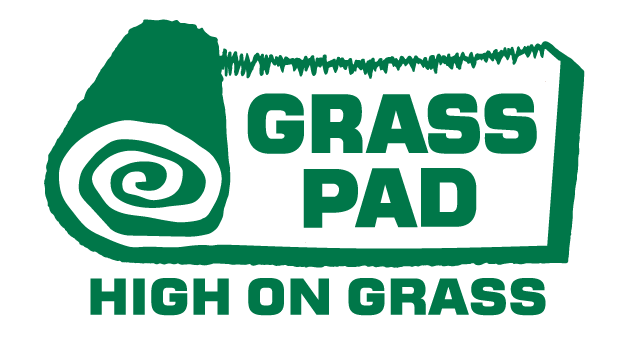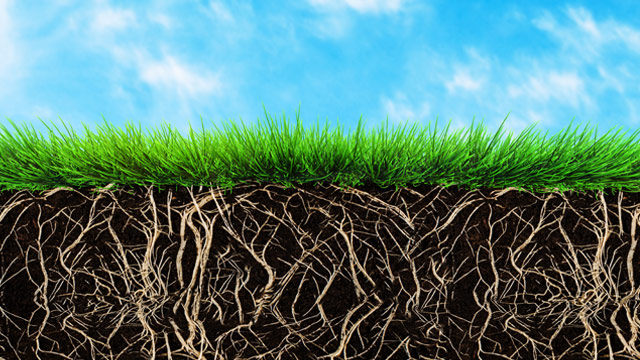Bottled water at the gas station is more expensive than gasoline. So we buy water tanks, water filters, water jugs, and Waterpiks®. We get our water boiled, distilled, chlorinated, oxidized, and brewed. Home, health, and industry depend on clean water. But we overlook Mother Nature’s most crucial water filter, the grass we walk on.
Thousands of billions of grass plants protect our earth and filter our groundwater. A blade of grass – it has no moving parts, yet its growth process takes polluting gases from the air and returns pure oxygen. For example, on an average 10,000 square foot lawn, there are 8 million individual grass plants. These tightly growing grass leaves are responsible for the photosynthesis that makes the grass plant grow, and in the process, they exchange the carbon dioxide in the atmosphere for clean, pure oxygen.
Grass Roots Filter Pollutants
Below ground grass roots are even more impressive. For example, a single grass plant can generate millions of individual roots that weave miles of individual fibers. Multiplied by 8 million plants, this forms a massive underground filter that traps and digests atmospheric pollutants. This root mass is home to billions of microorganisms that work together to build up the humus and soil fertility and reduce carbon dioxide. This complex system of microbial activity is essential for healthy plant growth and the decomposition of organic matter.
A 2500 square foot lawn can convert enough carbon dioxide into oxygen to sustain a family of four for one year. Grass purifies the air. It absorbs particulates and some of the worst atmospheric pollutants such as sulfur dioxide and ozone. Natural grass consumes greenhouse gases at a greater and faster rate per square foot than trees.
Grass Filters Ground Water
Natural grass filters our groundwater and regenerates the deep black soils so prized by gardeners. Our turfgrass lawns, parks, and open areas provide a natural and comfortable setting for fun and games; release oxygen and cool the air; controls pollution, and purify and replenish our water supply.
Natural Grass Benefits Urban Areas
In our cities, grass provides obvious aesthetic benefits. Grass slows water runoff, prevents soil erosion, deadens noise pollution, and reduces air temperature. Natural grass areas can be 60 degrees cooler in hot summer than adjacent concrete. Lawn areas act as a fire buffer in otherwise highly flammable landscapes. Likewise, closely mowed turf discourages nuisance pests such as snakes, rodents, and small animals, preferring taller cover. Disease-carrying insect pests, including ticks, chiggers, spiders, mosquitoes, and others, are much easier to control in mowed turf.
Grass Helps Recapture Rainwater
The rain on the streets, parking lots, and artificial turf in our cities quickly run off to rivers and streams. This runoff is not filtered by urban lawns and carries vehicle and industrial residue. In our United States, there are some 30 million acres of turfgrass. Each acre captures 600,000 gallons of groundwater recharge every year. If we want more clean water in modern urban design, we need more healthy green grass.
Grass Isn’t Going Anywhere
The Emperors of China and Rome, the Mayans and the Aztecs, and the ancient Persians all valued grass in the design of their cities and palaces. Unfortunately, some modern architects and urban planners have forgotten these old lessons. Green grass is a vital component in Mother Nature’s water filter. Unfortunately, today there is a misguided notion that cities need more concrete and less natural grass. Instead, they need a little more of Mother Nature’s green ocean.





